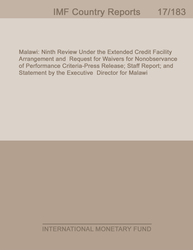
Belgium: 2014 Article IV Consultation-Staff Report; Press Release
KEY ISSUES:With growth projected at just over 1 percent in 2014, recovery from the stagnation of 2012–13 is proving slow, as in much of Europe. Healthy private balance sheets and integration with Germany dampened the impact of the crisis. However, despite its resilience the economy has been losing competitiveness due to higher labor cost and lower productivity growths than peer countries. The government has taken measures to close the wage gap, but the economy also needs to become more productive and adaptable through deeper product and labor market reforms. Low rates of employment further penalize growth. The government has reformed social benefits to increase activation, but there is scope to further reduce inactivity traps and to shift resources from passive to active labor market policies.Short-term risks come mostly from the external environment, but failure of structural reforms to keep up with competitive pressures is a more significant medium-term risk. Deleveraging has significantly reduced financial sector risks, and, while the sovereign-bank nexus remains important, cross exposures are being unwound. Ability of banks to maintain adequate capital buffers in the face of low profitability remains a risk.Public finances are under repair. Structural adjustment of 1.1 percent of GDP was achieved in 2012–13, but another 3.3 percent is still needed to meet the authorities' medium-term target. Gradual but steady structural adjustment of 0.75 percent a year toward that objective appears appropriate in view of current cyclical conditions. At the same time, the effort should be redirected from revenue to spending measures. Fiscal consolidation remains challenging because of the complex fiscal structure of Belgium, but the task has been helped by a new burden sharing agreement which clarifies the consolidation responsibilities of the regional and federal governments.The main challenge for banks is to move from balance sheet repair to adjustment of business models in the face of low profitability and regulatory changes. The balance sheet of banks has come down from 410 percent of GDP in 2008 to 268 percent in mid–2013. Solvency and liquidity ratios are improving, but profitability has been weak owing to low interest margins and high operating costs. The supervisory and regulatory frameworks are being strengthened, notably with a new draft banking law which restrains trading activities and improves the recovery and resolution framework,including by increasing buffers for depositor protection.
Publication date: March 2014
ISBN: 9781475541106
$18.00
Add to Cart by clicking price of the language and format you'd like to purchase
Available Languages and Formats
| English |
Prices in red indicate formats that are not yet available but are forthcoming.
Topics covered in this book
This title contains information about the following subjects.
Click on a subject if you would like to see other titles with the same subjects.
Money and Monetary Policy , International - Economics , Public Policy ,
Also of interest
Summary
Copyright © 2010 - 2024
Powered by:
AIDC



